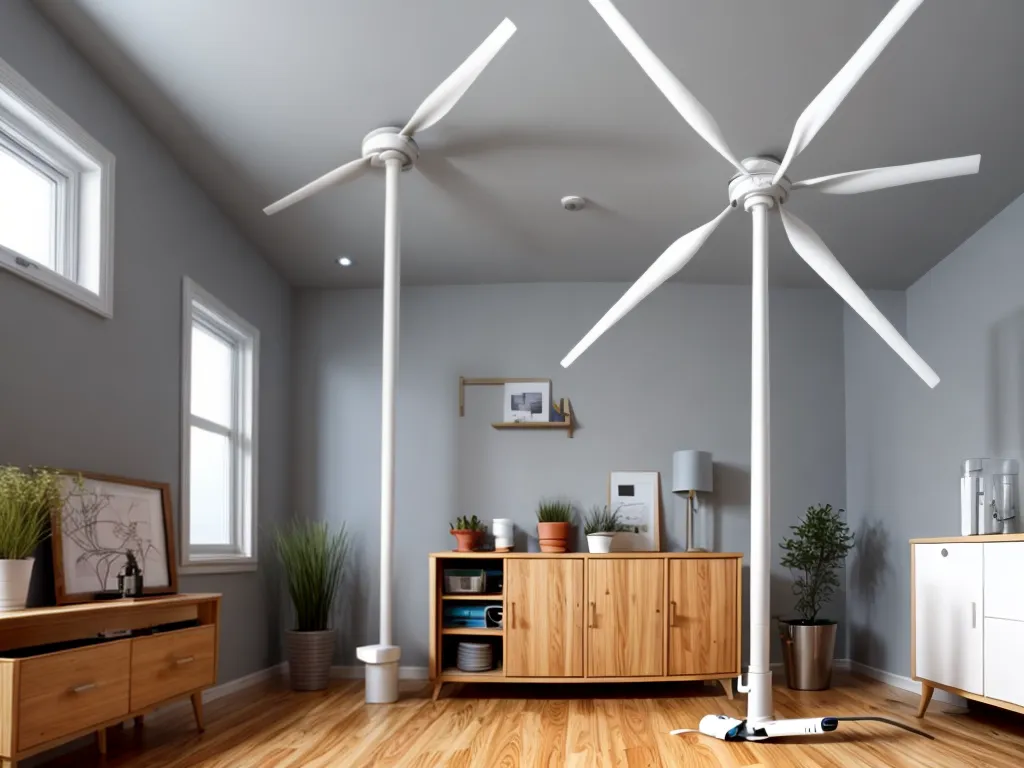
How to Turn Your House Into a Wind Farm Using Miniature Turbines
Introduction
Installing small wind turbines on your property can help generate clean electricity to power your home and reduce your dependence on the electric grid. With careful planning and the right equipment, you can turn your house into its own miniature wind farm. Here is a step-by-step guide to help you get started.
Assessing Your Location
The first step is determining if your location has adequate wind resources. While large wind turbines require wide open spaces, small turbines can work in suburban or even urban environments if positioned properly.
To find out if your site has sufficient wind, you'll need to measure the average annual wind speed using an anemometer. As a general guideline, an average wind speed of at least 10 mph is recommended for a small turbine. But even lower speeds may work if you use a turbine designed for low wind areas.
Higher locations like hilltops or open fields provide the best conditions. But strategic placement near buildings can take advantage of wind acceleration around structures. Work with a wind energy expert to identify the optimal turbine locations.
Selecting the Right Turbines
Once you know your site's wind speeds, you can select the appropriate turbine models. There are two main types:
- Horizontal axis - With blades that spin perpendicular to the tower, like large utility-scale turbines. Require higher wind speeds but produce more energy.
- Vertical axis - Spinning on a vertical axis, well suited for turbulent, low wind areas. Generate less power but work in more locations.
Size is also a factor, as larger rotor diameters can harness more wind. For residential use, turbines are available in sizes from just a few feet across to around 10 feet or more. Match the rotor size to your average wind speeds.
Consider sound ratings as well, as some turbines are quieter than others. Noise can be an issue if installing close to your home.
Determining How Many Turbines You Need
The number of turbines depends on your energy needs and property size. A single 5 kW turbine can generate around 15,000 kWh annually given adequate wind. That's enough to cover a large portion of a typical household's electricity usage.
To size your system, estimate your home's annual electricity consumption, then divide by the expected output of your chosen turbine model. Allow for some extra capacity for future energy needs.
Space permitting, multiple smaller turbines can be installed to generate even more power. But each turbine needs unfettered access to wind, so placement is critical.
Tower Considerations
The turbine tower raises the rotor high into the airflow to capture the strongest winds. While larger commercial towers can be over 300 feet tall, most residential models are in the 30 to 80 foot range.
Towers come in two versions:
- Guyed - Narrow towers kept vertical by guy wires. Less expensive but require space for the wires.
- Self-supporting - Freestanding hollow tubes. More costly but don't need guy wires.
Taller towers access faster wind speeds but are more expensive and can have zoning restrictions. You can start smaller and potentially extend the tower over time.
Other Electrical Components
In addition to the turbine and tower, your wind system needs:
-
Inverter - For converting the turbine's DC output to usable AC electricity for your home. Should be sized appropriately for your turbine's power rating.
-
Batteries - Store excess power generated on windy days for use when winds are calm. Only needed for off-grid systems.
-
Charge controller - Regulates voltage from the turbine to safely charge batteries. Required for battery-based systems.
-
Disconnect switch - Safely isolates the system from the grid in case of emergencies or maintenance. Mandatory for grid-connected systems.
-
Meter - Monitors power output from the turbine. Helps ensure optimal performance.
Permitting and Installation
Most residential wind projects require permitting, which varies by local zoning laws. Permits often consider turbine noise, height, setbacks, visual appearance, and electrical connections.
Once permitted, professional installation is highly recommended. The turbine must be securely mounted and connected to your home's electrical panel according to electrical code. Proper maintenance access must also be provided.
Conclusion
Installing small wind turbines at your home is an involved process but can pay off for decades through energy bill savings and energy independence. With ample wind resources and strategic turbine placement, you can feasibly generate a substantial portion of your household electricity right on your own property.